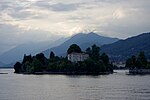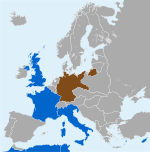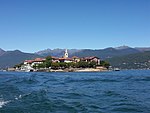Isola Madre
Gardens in PiedmontHouse of BorromeoIslands of Lake Maggiore in ItalyIslands of Piedmont

Isola Madre, at 220 m wide and 330 m long, is the largest island of the Isole Borromee archipelago which falls within the Italian part of the Alpine Lake Maggiore, in the Province of Verbano Cusio Ossola, Piedmont. The island is occupied by a number of buildings and architectural structures and is especially well known for its gardens. In the past it was known as Isola di San Vittore and later as Isola Maggiore.
Excerpt from the Wikipedia article Isola Madre (License: CC BY-SA 3.0, Authors, Images).Isola Madre
Viale Delle Magnolie,
Geographical coordinates (GPS) Address Nearby Places Show on map
Geographical coordinates (GPS)
| Latitude | Longitude |
|---|---|
| N 45.911111111111 ° | E 8.5377777777778 ° |
Address
Cipresso del Kashmir (Cipresso del Cashmir)
Viale Delle Magnolie
28922 , Pallanza
Piedmont, Italy
Open on Google Maps











